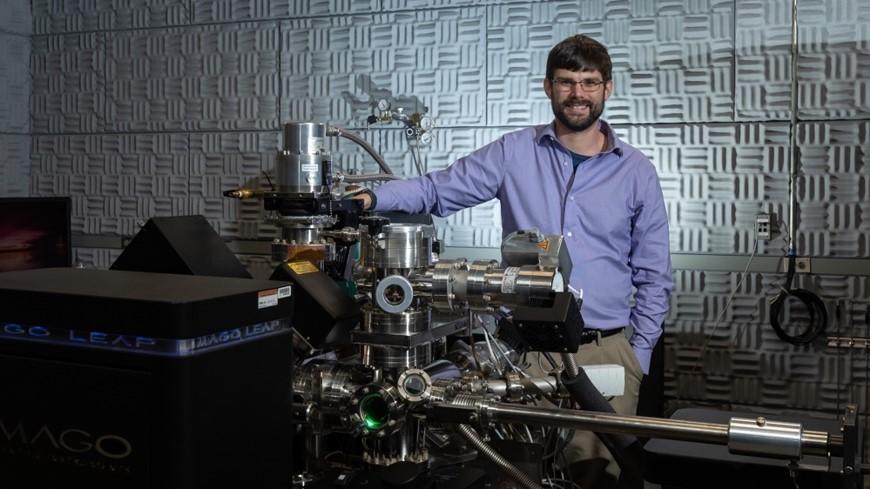
Overview
Atom probe tomography (APT) is a technique that can atoms and their 3D position in an ~1003 nm volume with sub-nm resolution. To do this, atoms are ionized from a hemi-spherical surface one-by-one using a massive electric field (~1010 V/m). The ions are directly projected with ~1,000,000x magnification onto a detector capable of determining each ion’s X, Y position, and time-of-flight. Because APT utilizes time-of-flight ion identification, the technique can detect all elements with equal probability, including light elements such as boron, lithium, carbon, and others.
There are several computational tools that can be utilized to mine important nano-scale compositional and structural information from these datasets.
One of the unique features of APT is its ability to detect low concentrations of elements (~10 ppm) with 3D sub-nm resolution, which makes it ideal for detecting dopant distributions and clustering in nanomaterials, particularly materials with nanostructures. In fact, APT is known to be the highest resolution 3D analytical technique.
Applications
At the CNMS, we have been pushing APT to study new material problems, such as H2 distributions in structural materials. Overall, a plethora of material systems have been studied using APT at the CNMS, including solar cells, light emitting diodes, transistors, quantum wells, a wide range of metallic systems, minerals, glass, oxides, and catalysts. Almost all scientific questions that can be answered by knowing the 3D distribution of atoms within any material system can be answered from an APT dataset. A few selected APT datasets from previous user projects are shown below including data from an AlNiCo magnet, lithiated Y2O3, Eu doped GaN, an AlCuMnZr alloy, and ZSM-5 zeolites.
Specifications
- EDAX octane elect X-ray detector
- 30K base temperature
- 355 nm laser
- m⁄∆m=1,000 mass resolution
- Sub-nm spatial resolution
- 10 ppm sensitivity
- Reflectron lens
Highlighted by the Department of Energy



